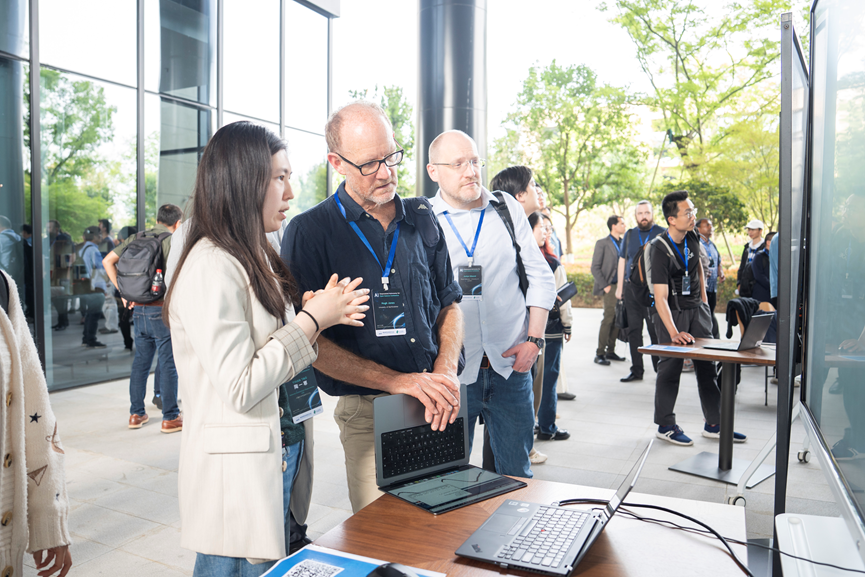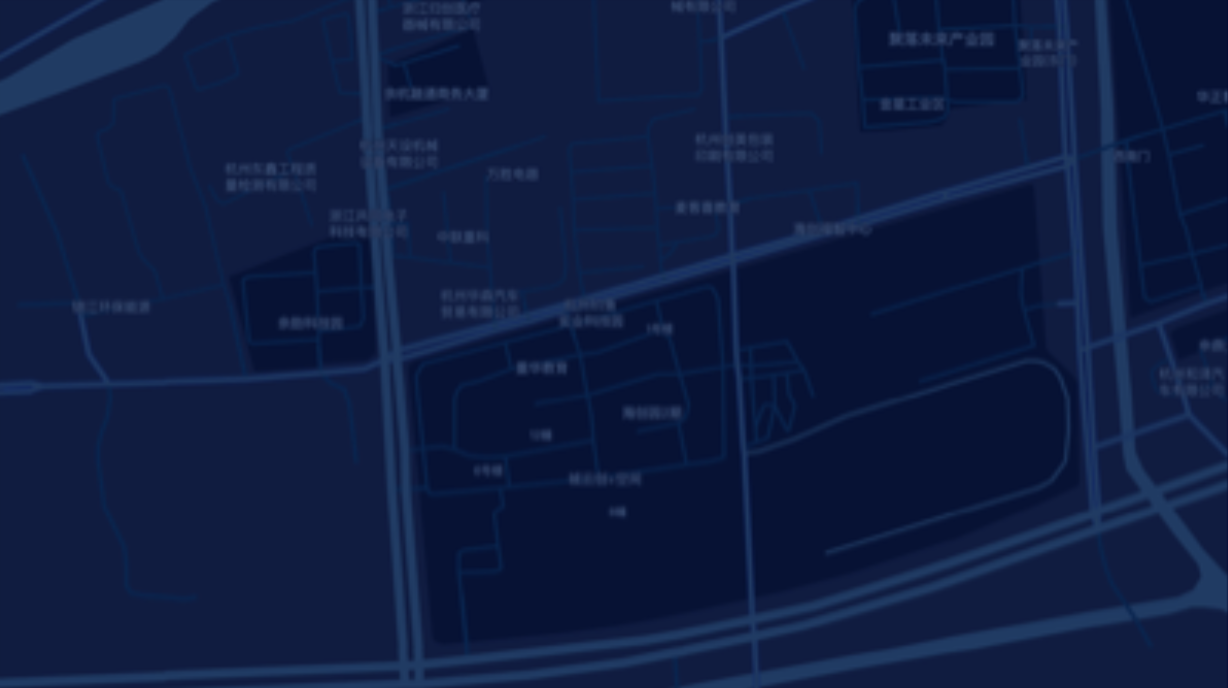

The AI-Empowered Astronomy for Open Science Conference was held on April 7-9, 2025 at Zhejiang Lab (ZJ Lab). Over 240 top experts, scholars and young researchers in astronomy from 22 countries, including Spain, South Africa, India, the United Kingdom, Russia, Chile and Brazil, attended the conference online and offline to discuss astronomical research in the era of artificial intelligence (AI) and how to promote open science.
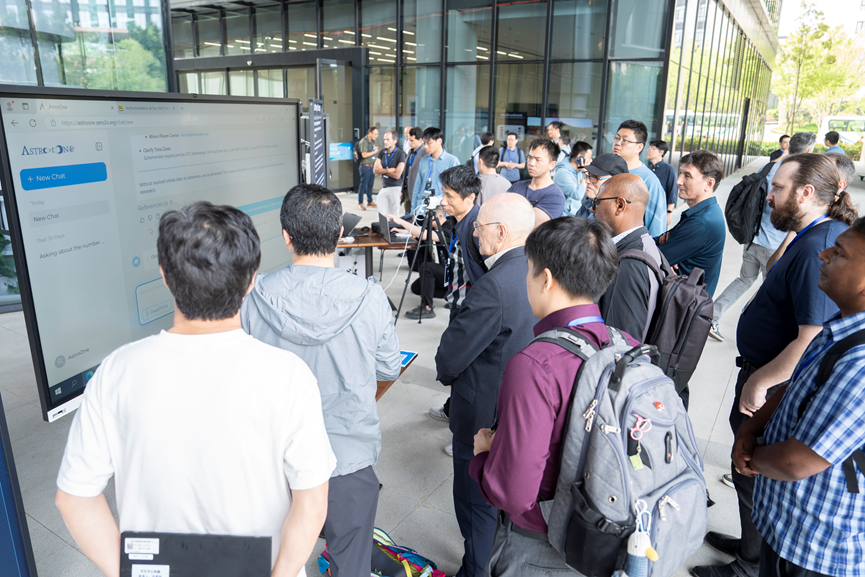
"The AstroOne we offer today can equip every astronomer with a teammate that is as capable as those who get a Ph.D. in astronomy, to assist astronomers in conducting research efficiently." At the conference, XUE Guirong, the chief engineer of ZJ Lab's comprehensive planning regime for scientific models, introduced AstroOne, a foundation model for astronomy, to global astronomers for the first time, which aroused wide attention and discussions among the participants.
AstroOne, a foundation model for astronomy jointly developed by ZJ Lab and the National Astronomical Observatories of the Chinese Academy of Sciences (NAOC), leverages professional astronomical knowledge to perform complex scientific reasoning. It also enables analysis and planning of observation tasks, as well as telescope observation and data retrieval for analysis purposes.
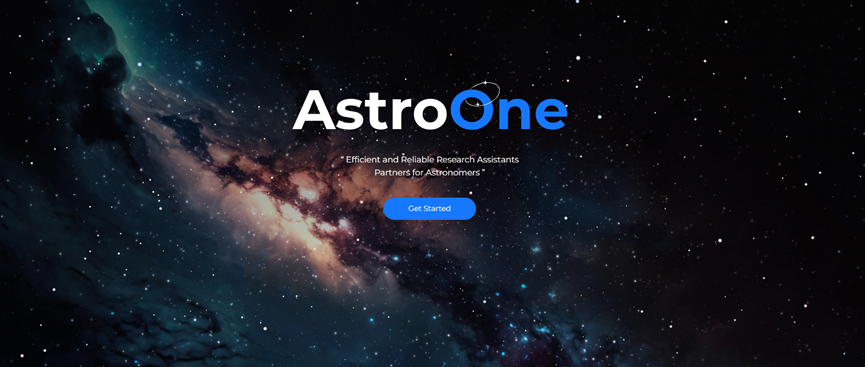
(AstroOne Website: https://astroone.zero2x.org/)
In the last iteration completed in late March, the R&D team produced a corpus of 11B astronomical texts based on publicly available astronomy papers and diverse high-quality astronomy websites. The capabilities of AstroOne based on QWen2.5 72B have been further enhanced by key technologies such as continued pre-training (CPT), supervised fine-tuning (SFT), direct preference optimization (DPO), model distillation, and reinforcement learning. "This model performs well in astronomy knowledge and reasoning, and contains a relatively small number of parameters, which is particularly favorable for low-cost deployment in private environments, such as scenarios that require high data security," said CHEN Huaxi, a senior research expert at ZJ Lab's Research Center for Astronomical Computing.
Besides AstroOne, ZJ Lab and NAOC have also jointly developed astronomical computing models such as SpecCLIP (a foundation model for stellar spectroscopy) and FALCO (a foundation model of astronomical light curves for time domain astronomy). Specifically, FALCO can rapidly capture extreme transient sources, and its versatility and application effect have been verified in downstream tasks including light variation classification, gravitational acceleration estimation, and stellar flare detection model. SpecCLIP displays great potential in the discovery of metal-poor stars depending on metallicity.
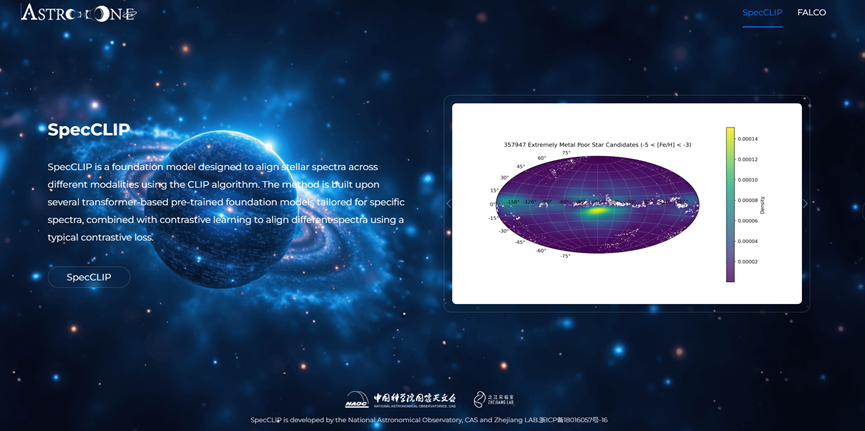
Metallicity, defined as the iron-to-hydrogen ratio [Fe/H], is an important measure of the amount of "metals" (all elements heavier than helium in astronomy) present in a star, which provides insights into the star's age and formation conditions. Usually, metal-poor stars with low iron-to-hydrogen ratios are assumed to be old because they formed in the early Universe when no metals were synthesized from a large number of nuclei and dispersed. Large-scale spectroscopic surveys play a major role in searching for metal-poor stars. However, traditional methods are inefficient and moderately accurate as spectroscopic data are generated all the time.
"Searching for metal-poor stars is akin to digging out fossils from ancient stars in the Milky Way, and it's time-consuming. In the past half-century, just over 50 stars with [Fe/H] < -4.0 (possessing one ten-thousandth of the Sun's metal content) have been discovered by large telescopes all over the world," said HUANG Yang, an associate professor at NAOC and the University of Chinese Academy of Sciences.
Using SpecCLIP, the team identified more than 8,000 metal-poor star candidates ([Fe/H] < -4.0) based on over 10 million low- and medium-resolution spectra from the LAMOST (Guoshoujing Telescope) and over 200 million ultra-low-resolution spectra from the GAIA Space Observatory in just one month. "Such low metallicity means that these stars haven't evolved on a long timescale, carrying memories of the very early Universe, which gives us a peek at what the Milky Way might have looked like in its infancy," HUANG Yang said.
It is worth noting that, in addition to measuring iron abundance, this model can also be migrated into more downstream tasks to measure the abundance of other metal elements and be used in more spectroscopic surveys.
"In building these models, we found that the model is more than just a tool; it is an engine that leverages science to promote a paradigm shift in astronomical research. More importantly, it's a process in which AI scientists and astronomers draw a 'big picture' together," XUE Guirong said.
In this "big picture", astronomical instruments are divided by waveband into six categories: radio, millimeter-wave, optical, X-ray, gamma-ray, and cosmic-ray, which correspond to three types of observation - images, spectra and time-domain observations, representing light-space distribution, light-frequency distribution, and light variation with time respectively. "So what we are doing now is tying up equipment, data and models through tokenization of scientific data from different wavebands, serving astronomers with our astronomical models and building embodied AI telescopes, to address scientific problems."
"In terms of the 'big picture', we hope to build more partnerships and deepen open innovation mechanisms featuring extensive consultation, joint contribution, shared benefits and common development," XUE Guirong said.
The astronomical models including the above-mentioned ones were displayed in an offline "model shop" during the conference. Astronomers and researchers from all over the world tested out these models at the site, held in-depth discussions with the R&D team, and looked forward to new astronomical discoveries driven by these achievements.
